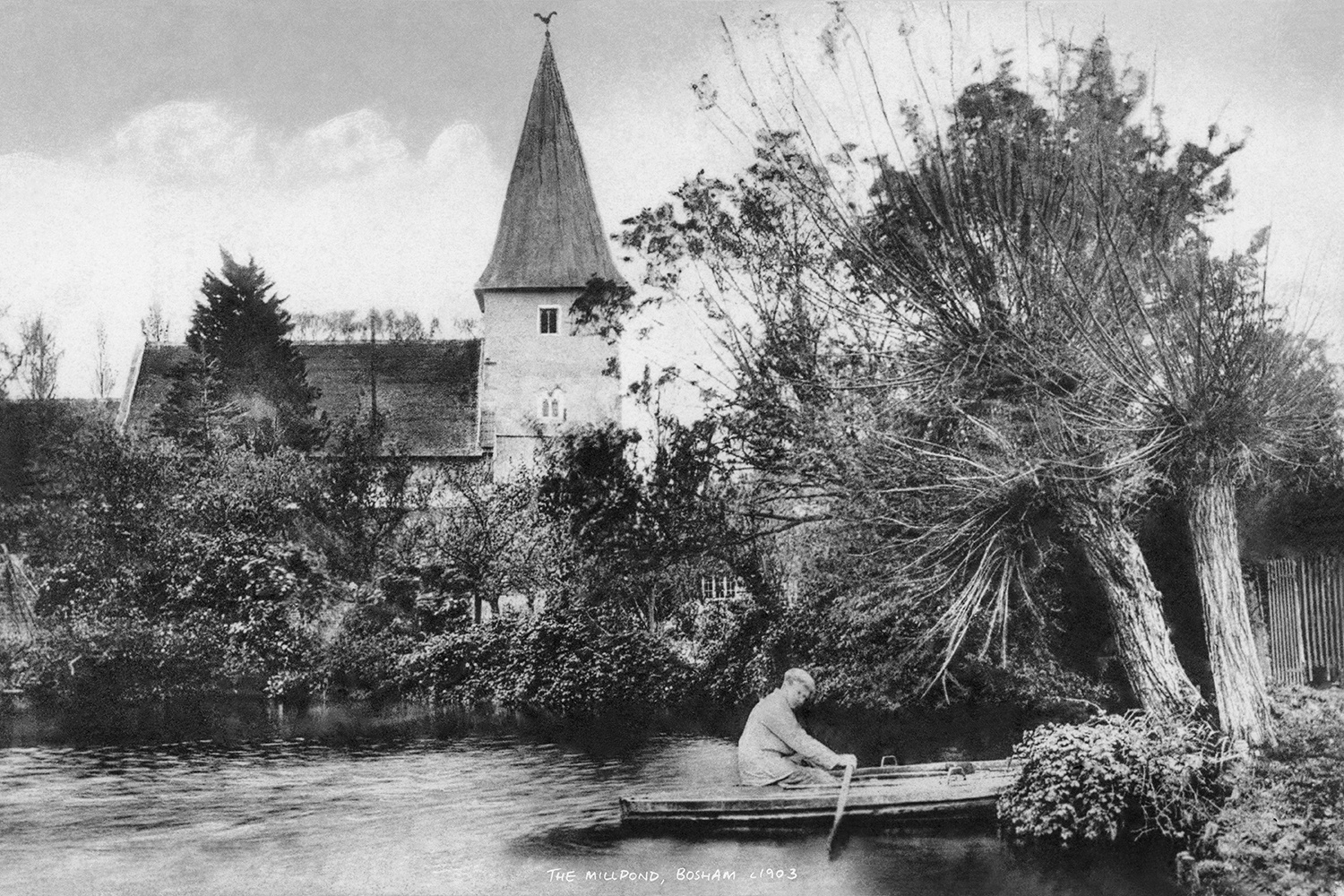Bosham Gallery Archive
Bosham used to have a millpond to even out the seasonal variations in the water level of the man-made Bosham stream, which fed the watermill on Bosham Quay until it closed in 1936. It was the oldest watermill in the area and had been in operation since at least the eleventh century, as it is mentioned in the Domesday Survey in 1080 as one of eight mills in the area. It was a very large millpond, with sluice gates to control the flow, and over the centuries it was stocked with fish and eel, which were regularly trapped for food.
The fame of the high-quality grain of the Bosham area, due to the above average sun hours and good fertile soil, has been known since Roman times. Wheat was grown almost entirely for bread, and the majority of barley was grown for malting (making beer). For centuries, the trading ketches and schooners left Bosham Quay with their holds filled with grain that had been ground in the watermill next to the Quay, bound for Kent and West Country ports.
The 1870s saw the beginning of large-scale centralised milling with the introduction of electric mills which could separate fine flour from the coarse components. These new mills were situated in or near towns, so Bosham's wind and watermills slowly declined in use. The last miller at Bosham Quay's watermill was George Brown, who ground maize for animal feed until 1925. The mill finally closed in 1936.
This photograph then, made in 1903, captures the end of an era. Waterpower had been the most important source of mechanical power for almost 2000 years, and the watermill on the Quay, along with its millpond, had served Bosham's farmers for at least 850 years. Here, a man is seen rowing across the millpond, behind is Holy Trinity Church, Bosham's Saxon/Norman church, which has been the dominant physical feature of the village, and virtually unchanged since the thirteenth century.
In 1956, Bosham Sailing Club moved into the old watermill and bought the adjoining cottage and garden, which was converted into a patio. In 1973, the building was given a Grade II listed status. In 2019, the sailing club bought the freehold to the old watermill.
© Luke Whitaker
